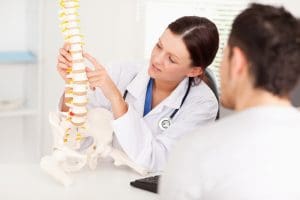 If you experience back pain, you can take some comfort in knowing that many others can sympathize. When it comes to common kinds of pain, lower back pain ranks with headaches and joint pain among the most frequent complaints, according to a report from the Centers for Disease Control and Prevention.
If you experience back pain, you can take some comfort in knowing that many others can sympathize. When it comes to common kinds of pain, lower back pain ranks with headaches and joint pain among the most frequent complaints, according to a report from the Centers for Disease Control and Prevention.
The most common reason for back pain is overexertion, when people try to do activities their bodies aren’t used to, such as moving a piano, working in the yard or sliding into second base. In most cases, the sore back muscles and stiffness will recover on their own after a few days of rest.
Prevention is best
The solution for preventing a back strain that results from overexertion is not to avoid all strenuous activity; rather, it is to strengthen your back through regular exercise to develop your back and core muscles. In addition, you can be smart and careful when doing heavy work. That is why your dad, your mom or your boss kept telling you to “lift with your legs, not your back.”
The three keys to proper lifting, according to spine-health.com, are the following:
- — Keep the chest forward. Keeping the chest pointing forward will guarantee a straight back. The back muscles will then be used most effectively for maintaining good posture, as they are designed to do.
- — Lead with the hips, not the shoulders. Move the hips first so the shoulders will move in unison. When moving the shoulders first, the hips tend to lag behind creating the dangerous twisting that can cause back injury.
- — Keep the weight close to the body. The further an object is held from one’s center of gravity, the more force required to hold up that object.
When to call the doctor
Sometimes, in spite of your best efforts, you end up with back pain or a back injury. If the symptoms disrupt your regular activities, then you should probably consult with a medical expert — especially because you don’t want the problem to become more severe. The Mayo Clinic recommends you visit a doctor if your back pain hasn’t improved after a week of home therapy. Suggested treatment includes a day or two of rest, over-the-counter pain medications and applications of heat or cold.
 Some of the other signs that you need to see a doctor include:
Some of the other signs that you need to see a doctor include:
- — Pain that is constant and intense, especially when you are lying down.
- — When pain spreads down one or both legs.
- — When you feel weakness, tingling or numbness in your legs.
- — If there is redness or swelling in your back.
- — If your back pain results from a fall, a sports injury or a car accident, you should go to the emergency room. If the pain is accompanied by bladder or bowel problems or a fever, you also need to seek emergency medical care, according to the Mayo Clinic.
Whether your back pain is new or you are dealing with a chronic problem, consultation with the the Center for Spine and Orthopedics can help you find the best way to help you get back to a normal, pain-free life.
This article was originally published on News.HJNews.com








